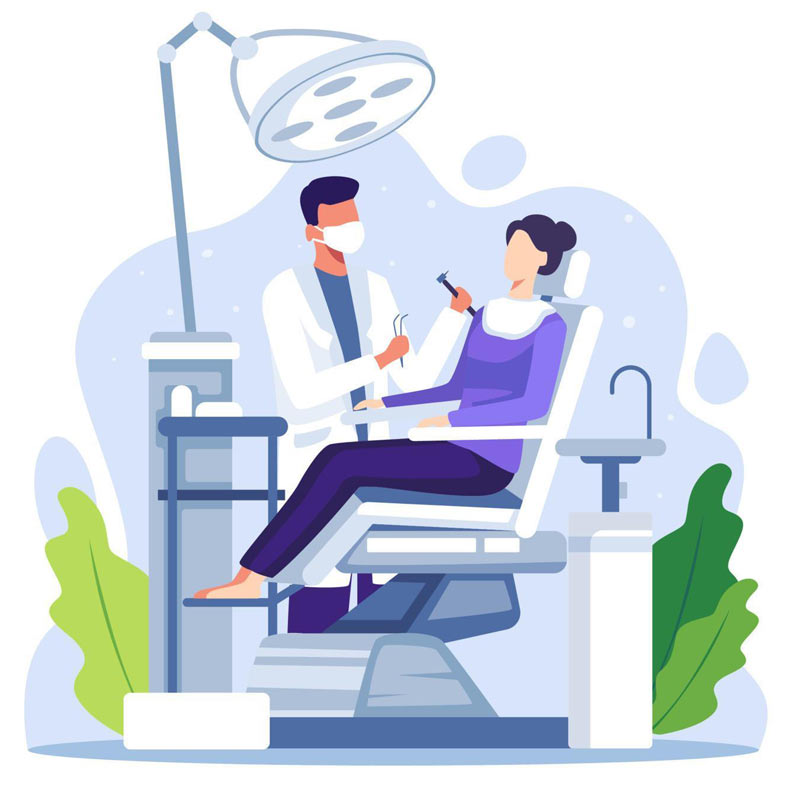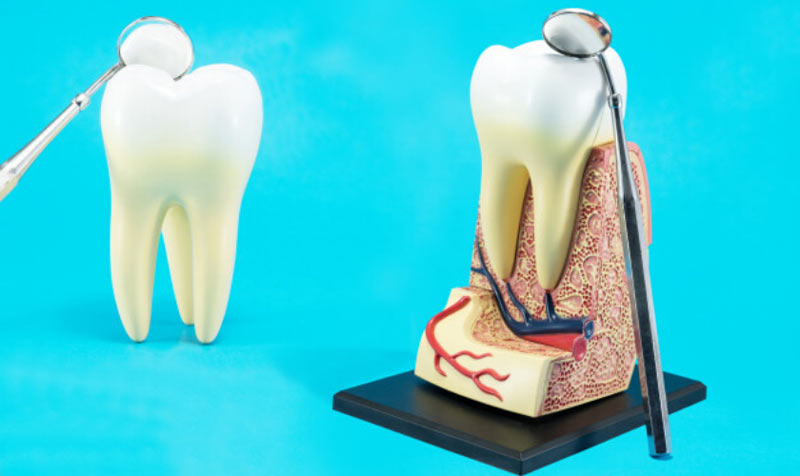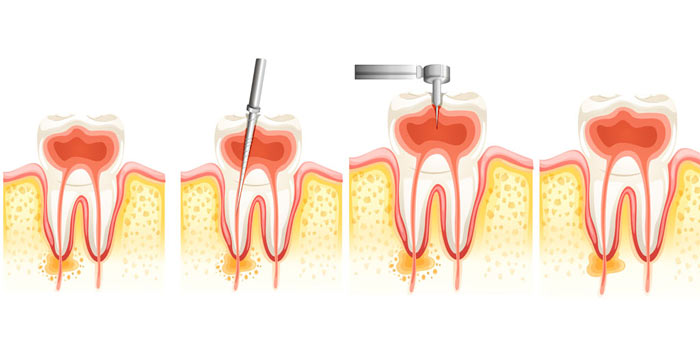Root canals are often necessary when a tooth is seriously decayed or infected. At Langley Dental Group, we focus on helping our patients understand their oral health. Recognizing the signs that you might need a root canal is crucial for timely treatment and preventing more serious issues. Now, we will discuss the signs that suggest you need a root canal, explain the procedure, and highlight the benefits of the treatment at our clinic.
If you’re experiencing severe tooth pain, swelling, or sensitivity to hot and cold, these are signs you need a root canal, and you should visit a dentist in Langley for a thorough evaluation and treatment.
Read More: Root Canal in Langley

Understanding Root Canal Therapy
A root canal is a dental procedure used to treat an infection at the center of a tooth, known as the root canal system. This infection occurs when bacteria from the mouth attack the tooth, caused mainly by tooth decay, leaky fillings, or trauma like a fall. The disease can spread if not treated, causing severe pain, abscesses, and potentially even tooth loss. Root canal treatment helps save the affected tooth and restores its function.
Read More: Emergency Dentist in Langley

Key Signs You May Need a Root Canal
Recognizing the symptoms that might indicate a need for a root canal can prevent further dental complications and save your tooth. Early identification and treatment are crucial for maintaining good oral health. Here are the key signs that you might need a root canal and should see a dentist immediately. Awareness of these symptoms can help you take proactive steps to preserve your dental health and avoid more severe issues.
1. Persistent Pain
A common sign of needing a root canal is continuing tooth pain. This pain can be constant or come and go, often getting worse when you chew or press on the tooth. It might also spread to your jaw, face, or other teeth.
Key Characteristics:
-
- Throbbing pain
- Pain that remains after eating hot or cold foods
- Pain that keeps you up at night
Book Your Dental Visit Before the Pain Gets Worse
If you’re experiencing tooth sensitivity or ongoing pain, don’t wait. Book an appointment at My Dentist Langley today and let our experienced team protect your smile and stop dental problems early.
2. Sensitivity to Heat and Cold
If you feel a sharp pain when eating or drinking something hot or cold, it might be a sign of nerve damage or a tooth infection. Sensitivity that lasts even after eating or drinking is problematic.
Key Characteristics:
-
- Sudden, intense pain when eating or drinking hot or cold items
- Sensitivity that lasts longer than a few seconds
- Sensitivity that gets worse over time
3. Swollen Gums
Swelling around the affected tooth often indicates an infection. The swelling may come and go or stay constant. Sometimes, a small abscess can form on the gums near the infected tooth.
Key Characteristics:
-
- Swelling that is tender to the touch
- Swelling that extends to the face or neck
- A pus-filled abscess on your gums
4. Tooth Discoloration
If a tooth starts changing color, especially getting darker, it might mean the nerve and blood vessels inside are dying because of an infection. This discoloration can happen slowly and might come with other symptoms.
Key Characteristics:
-
- Tooth turning darker
- Yellow, gray, or black coloring
- One tooth changes color while the others stay the same
5. Prolonged Sensitivity to Pressure
Feeling pain or discomfort when biting down or touching a tooth could mean the nerve endings around it are damaged or infected. This pressure sensitivity usually doesn’t go away.
Key Characteristics:
-
- Pain when chewing or touching the tooth
- Increased sensitivity compared to other teeth
- Persistent pain that lasts
6. Pus Drainage and Bad Breath
Pus drainage and a bad taste in your mouth can be signs of an abscessed tooth, indicating an infection that might need a root canal. This often comes with a bad smell in your mouth.
Key Characteristics:
-
- Pus release from the affected area
- Bad breath that doesn’t go away even after brushing
- Unpleasant taste in the mouth

The Root Canal Procedure
Knowing what happens during a root canal can help reduce anxiety and get you ready for the treatment. Understanding each step, from the first exam and X-ray to numbing the area, removing the infection, cleaning and shaping the tooth, and finally filling and restoring it, can make you feel more at ease. This way, you will understand that you are in good hands at Langley Dental Group.
- Examination and X-Ray
The dentist will examine your tooth for signs of infection or decay. They will take X-rays to see how horrible the disease is and to understand the shape of the root canals. This helps them plan the procedure correctly. This initial step ensures the dentist has all the information needed to proceed safely and effectively.
- Anesthesia
The dentist will numb the area around the affected tooth with local anesthesia to ensure you don’t feel any pain. This ensures you won’t feel anything during the procedure. The anesthesia is applied carefully to ensure complete numbness. You will be awake and aware but free from any discomfort.
- Removing the Infection
The dentist will make a small opening in the top of the tooth to reach the infected pulp. Special tools will remove the infected pulp from the root canals. This step is essential to getting rid of the infection, and the dentist will do this carefully to remove all the infected material.
- Cleaning and Shaping
After removing the infected pulp, the dentist will clean and shape the root canals. They use small tools to thoroughly disinfect the canals and prepare them for filling. This step is crucial to prevent future infections.
- Filling and Sealing
After the canals are cleaned and shaped, they are filled with a safe material that helps keep bacteria out. Then, the tooth is sealed with a temporary or permanent filling. This step is essential to keep the tooth protected and prevent new infections.
- Restoration
Finally, the tooth must be fully restored to look and work naturally. This usually means getting a dental crown or a dental filling. The crown protects the tooth and brings back its shape and function. You should return for a follow-up visit to ensure everything is perfect and the tooth is fully restored.
Read More: Endodontics in Scarborough
Benefits of Getting a Root Canal at My Dentist Langley
At Langley Dental Group, our experienced dentists know how to perform root canals with the best care possible. We use the latest technology and techniques to make the treatment effective and quick. Our clinic is designed to be relaxing, so you feel comfortable during your visit. We also provide personalized care and follow-up to ensure you recover and keep your teeth healthy.
Read More: Sedation Dentistry in Langley

Preventing the Need for a Root Canal
While root canals are sometimes necessary, maintaining good oral hygiene can significantly reduce risk. Regular dental check-ups are essential, so visit your dentist at least twice yearly for routine exams and cleanings. Brush your teeth at least twice daily, floss daily, and use an antibacterial mouthwash to keep your mouth healthy. A healthy diet with limited sugary foods and drinks can prevent tooth decay and cavities. Also, wearing a mouthguard during sports helps protect your teeth from injuries.
Read More: What is Crossbite?
Conclusion
Recognizing the signs that you may need a root canal and getting treatment quickly can save your tooth and prevent more problems. At Langley Dental Group, we are committed to providing excellent dental care and helping you maintain a healthy smile. If you experience any symptoms mentioned in this blog, contact us for an evaluation. Your dental health is our top priority, and we are here to give you the best care possible. For more information or to schedule an appointment, visit our website or call us today.
Our Services: Best Cosmetic Dentist in Langley
Have you ever experienced any of these symptoms, or do you have questions about root canal treatment? Share your thoughts in the comments below; we’re happy to help.




